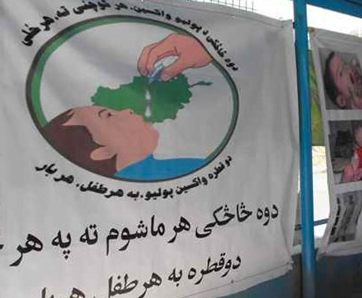Not long ago polio was on the retreat. India, which historically accounted for most polio infections worldwide was certified polio free. Rates of transmissions and infections were at an all time low around the world. Only three countries remained endemic: Nigeria, Pakistan and Afghanistan. But even in those countries, polio infections were mostly limited to some conflict plagued regions and the actual number of infections was relatively low: 160 cases total in 2013.
But in 2014, things have gotten precipitously worse for polio. Thanks to the collapse of the health system, polio re-emerged in Syria, which had been polio free for a decade. Neighboring Iraq has also reported cases, and the polio virus was detected in the sewage system of Gaza, the West Bank and Israel. Cameroon, which likely imported cases from neighboring northern nigeria, exported a case to Equatorial Guinea. Attacks on polio workers in Pakistan are on the rise, and rates of immunizations are comparably low in the Taliban controlled FATA region.
One year ago, there were 24 cases of polio reported worldwide between January and April. This year, there has been 68 cases already. To make matters worse, this is considered “low transmission season.” When the rainy season picks up this month, those numbers could increase dramatically.
In all, there are 10 countries with active polio outbreaks. The highly contagious nature of the virus means that the progress that the world has made on polio can be reversed if the international community does not step up efforts to contain and reverse its spread.
This is where the WHO comes in. After consulting with an international committee of infectious disease experts the WHO officially declared today that the polio outbreaks are a “emergency”. Specifically, WHO director Margaret Chan declared this a “Public Health Emergency of International Concern” which is a bureaucratic designation that triggers a number of responses. These range from expediting visa requests for health workers to mandating that travelers to and from affected countries prove they have been recently vaccinated.
The suite of recommendations from the WHO to affected countries are temporary. But they are intended to put a break on the spread of polio before the rainy season comes in earnest this month, which is when transmissions historically peak.
In the coming weeks we will see the extent to which affected countries are implementing the recommendations and stemming the spread of polio. What is clear is that if the present trend continues, polio will keep spreading. “While the virus has resurged, it reminds us that until its eradicated it is going to spread internationally,” says Dr. Bruce Aylward, who heads WHO’s Global Polio Eradication Initiative. “It’s going to find and paralyze susceptible kids.”
